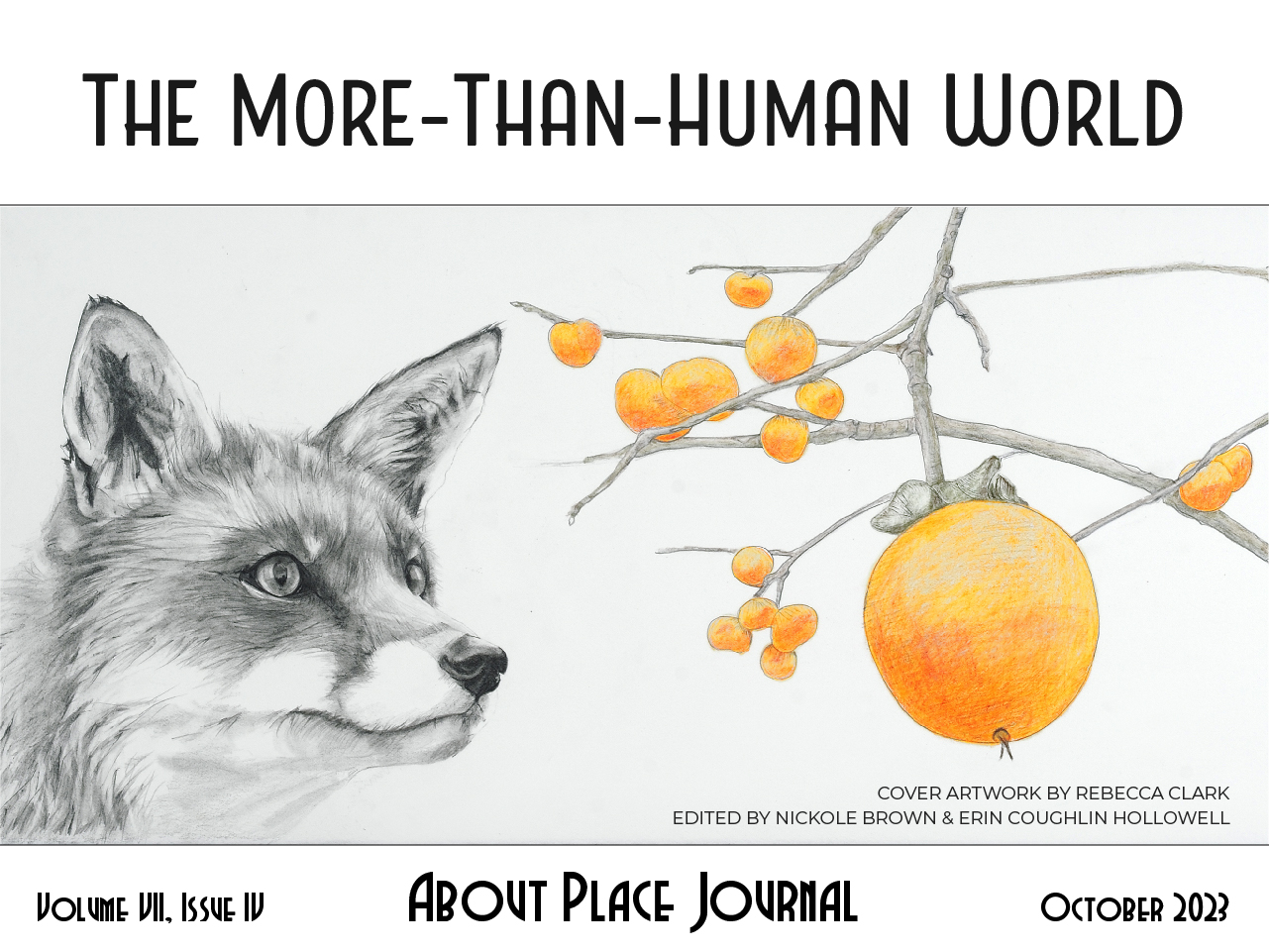1.
Ashnola Pass is a lonesome place, unless you prefer the company of wolves, lynx, and wolverines. It was my search for the latter that brought me into the wild. It was the wolverines’ search for wildness that brought them back to the North Cascades.
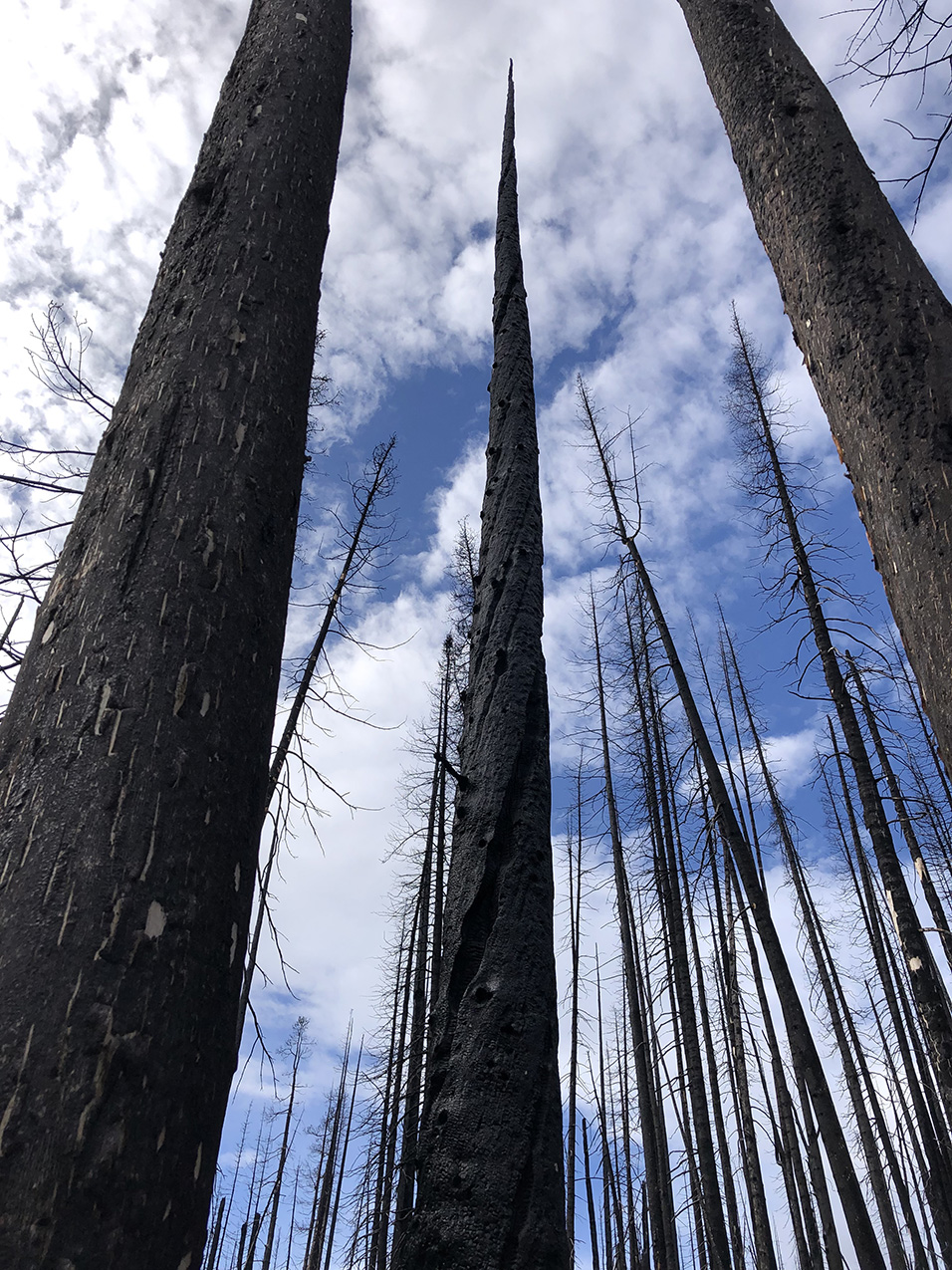 2.
2.
Blackened trees, fallen, take on haunting shapes. Serpents of charcoal formed by forked tongues of flame, like the black snake fireworks I used to light as a child. Gargantuan crocodiles, frozen in time, stalk Pompeii-esque bodies, limbs severed and gnarled. Where once thrived a forest stand spindly corpses, on earth seared so hot that rocks still bear scorches.
Ten hours trekking through burned up terrain does funny things to your mind.
3.
Cameras capture wolverines without tranquilizers or traps. We draw them to our survey sites with stinky lure, a hint of rotting carcass when they’re wandering by. (Imagine a bakeshop wafting warm apple pie.) With luck they will linger, reveal their throat and chest—the markings unique, like a finger’s print. Cameras are the hidden eyes of science when wolverines have winter to themselves.
And wolverines, of all beings, are built for long, harsh winters. Huge feet to float them across crusted powder. Claws sturdy as ice picks to pry carcasses from slides. Thick, frost-shedding fur, prized in the Arctic for lining hoods. Without wolverines, the snow is stripped of its wildness. Without snow, there would be no wolverines.
4.
Diamond Creek Fire, 2017—locals remember it well. A July campfire gone wild in Washington’s Pasayten Wilderness. Within a few hours, flames had devoured half a dozen acres; appetite whetted, they were hungry for more. The tally was 50,000-plus acres by late August, when the blaze made a run for the Canadian border and leapt across without pausing. On one steamy day in early September, the fiery footprint nearly doubled. Firefighters pronounced “full containment” on October fifteenth.
Summer 2019, my field partner and I stopped by the Methow Valley Ranger Station before setting out for Ashnola Pass. “You’ll be hiking through a lot of dead trees,” warned our friend with the Forest Service, who had watched smoke fill the valley from the parking lot. He hadn’t hiked the trail himself since the fire. He knew there would be ghosts.
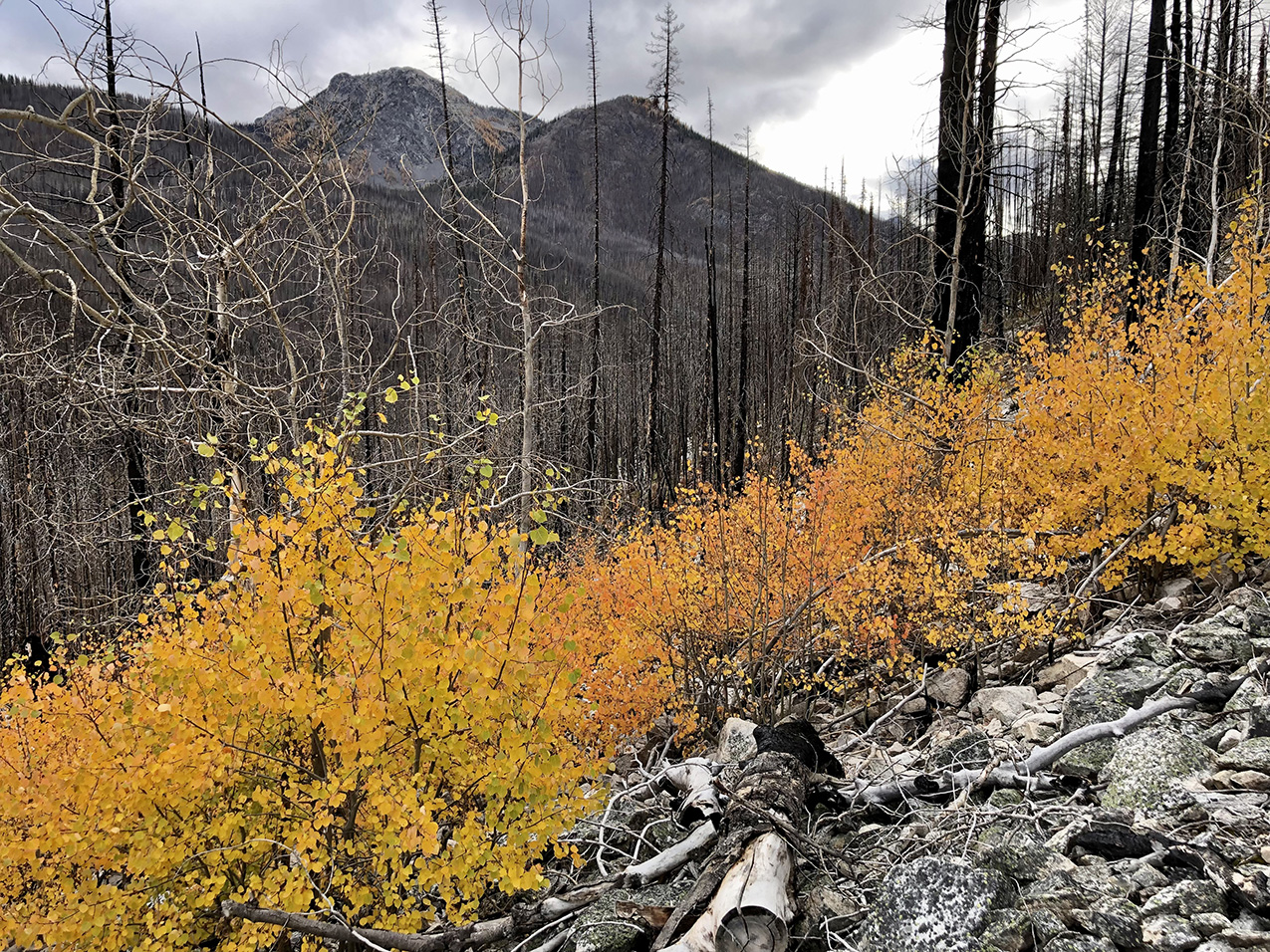
5.
Extirpation came quickly for wolverines, uncommon to begin with in the Cascade Range. When the fur trade exploded in the late 1800s, the wolverines’ quest for meat led them to ubiquitous traplines, where they raided baits and quarry with carnivorous gusto. “The wily wraith that trappers hate,” reads the title of a 1954 Maclean’s article about wolverines. And we all know where hate gets us.
Hate also condemned wolverines to the widespread poisoning campaigns of the early twentieth century—strychnine-laced carcasses scattered like landmines across livestock country. Gone were the wolves, the cougars, the raptors who fed on tainted flesh. Gone, too, were the wolverines, deceived by their skills as scavengers, betrayed by humankind.
Trapping records from Washington tell the tragic tale, the decline in skinned wolverines tracking the population’s demise.[1]
1890s: 17 wolverines
1900s–1910s: 10 wolverines
1920s–1950s: 1 wolverine
Biologists detected a weak pulse of sightings in the 1960s and early 1970s. Probably transient wolverines who didn’t stick around.
6.
Full containment—yet another illusion that we’re in control.
By the time the Diamond Creek Fire was contained in mid-October, 128,000 acres had been destroyed or temporarily degraded, depending on your point of view. To Canada lynx, as rare as wolverines in the North Cascades, this megafire dealt yet another blow.
Lynx, like wolverines, were carved out of snow. Favorite food? Snowshoe hares, of course. Lynx use the boreal forests east of the Cascade Crest—places like Ashnola, in the Pasayten Wilderness. One-third of their habitat burned between 1992 and 2015, with numerous fires (including Diamond Creek) having ripped through since.[2]
A blackened forest grows back slowly in these parts, requiring up to forty years before snowshoe hares—and thus lynx—might recover. Meanwhile, one contained fire leads to the next, uncontained.
7.
Gulo gulo, gluttonous glutton. Skunk bear. Woods devil. Nasty cat. The nicknames we assign to wolverines say a lot—more about ourselves than the wolverines.
There are other names, too, given by Indigenous peoples. The Nez Perce say Se·’pin’isé·pin, “carrier of snowshoes.” To the Innu, the wolverine is Kuekuatsheu—featured in legends of the trickster, or the creator of the Earth. The Dena’ina speak of Nełchish; Dena’ina Athabaskan writer Peter Kalifornsky also referenced Idashla (little friend), Bank’ilkizi (patched up one), and Yes Hughen’u (tough one).
8.
Haze and health warnings are the new normal of summer.
One August afternoon, we hiked back from a camera station at lightning speed, ascending four steep miles in under two hours. We’d noticed haze in the distance when we’d parked our car that morning, and also a flat tire, which we’d switched out with a spare. Now the smoke hung heavy in the air, irritating my lungs, my eyes, my nervous system. Just keep going, I urged my weary legs, counting each step aloud as an added incentive. From the end of the Hart’s Pass Road—the highest maintained road in the state—we drove down down down on that spare toward the smoke and the fire, negotiating rockfall, dodging dizzying drop-offs, skirting Deadhorse Point, passing bone-dry ponderosas, finally wobbling into the community of Mazama, where panicky residents were lined up for gas. There was only one way out and we took it, fast, barely pausing to snap photos along the way: that godawful plume, sprinklers dousing pastures, horses silhouetted against a black-and-blood-orange sunset. In a nearby town, edges already charred, we pulled up to an auto repair shop with little hope for assistance. An after-hours mechanic repaired our tire for twenty dollars. We couldn’t thank him enough.
What does it mean when you study a snow-dependent species in the Pacific Northwest and you have to fret about forest fires every time you’re in the field?
9.
Inciweb, an interagency website that tracks wildfires, has become our go-to guide for backcountry hiking. We used to check trail conditions, look at the weather forecast before venturing out. Now we monitor fire maps and alerts to make sure we’ll be safe.
10.
June through September is my field season, a term hailed by wildlife biologists the world over as that hectic time of year you wouldn’t trade for anything.
I start to fantasize about the next field season soon after the last one is finished—how the mountains calm my mind, my mind wanders in the mountains. I feel small out there, in the best sort of way; it’s hard to worry about the future (or fixate on your past) when all you’re trying to do is reach that damn peak.
Wolverines have taught me how to live in the moment.
11.
Kits are born in February or March—typically two in a litter—bright white like polar bears and no bigger than snowballs. A wolverine mother is a subnivean superheroine who births, nourishes, and protects her babies deep beneath the snow. With all due respect to Hugh Jackman, he’s got nothing on her.
12.
Lessons from a Wolverine, by Barry Lopez, is the story of an airplane mechanic searching for answers in the Alaskan wilderness. The man falls asleep by a creek and dreams of two wolverines. “You have to pay attention,” one of the wolverines instructs him as they lay looking at the sky. “We’re going to show you something.” Next, the wolverines bestow powerful visions upon their visitor to help him understand his place in the natural world.
Lopez’s book was published in 1997. Also that year, a female wolverine was killed by a vehicle in northwest Washington, her ill-fated presence nonetheless a promising sign that her kind was recolonizing the North Cascades. A decade later, one of my colleagues gave a public presentation on wolverines. The driver involved in the collision attended his talk, voicing passionate support for wolverine conservation. I suspect that this man, too, dreamed about wolverines.
13.
Melting glaciers are a cliché of climate change, like starving polar bears and megafires. But a tiresome narrative doesn’t make it less true.
The North Cascades contain about one-third of the glaciers in the contiguous U.S.—312 colossal chunks of ice that have become much less colossal in recent decades. Since 1959, the area covered by glaciers has shrunk by nineteen percent, or twelve square miles.[3] Turn the clock back a century, to when wolverines were first wiped out by people, and the glacial extent would be more than twice what it is today.[4]
14.
Natal dens are dug three feet or more into hardened snowdrifts, sometimes next to talus or fallen trees. Only hidden beneath the snow can a female wolverine keep her kits safe from predators and the dangerous cold. Herein lies the rub for reproductive wolverines: the snow layer must persist well into spring, at which point kits can follow their mother around and leave the den behind.
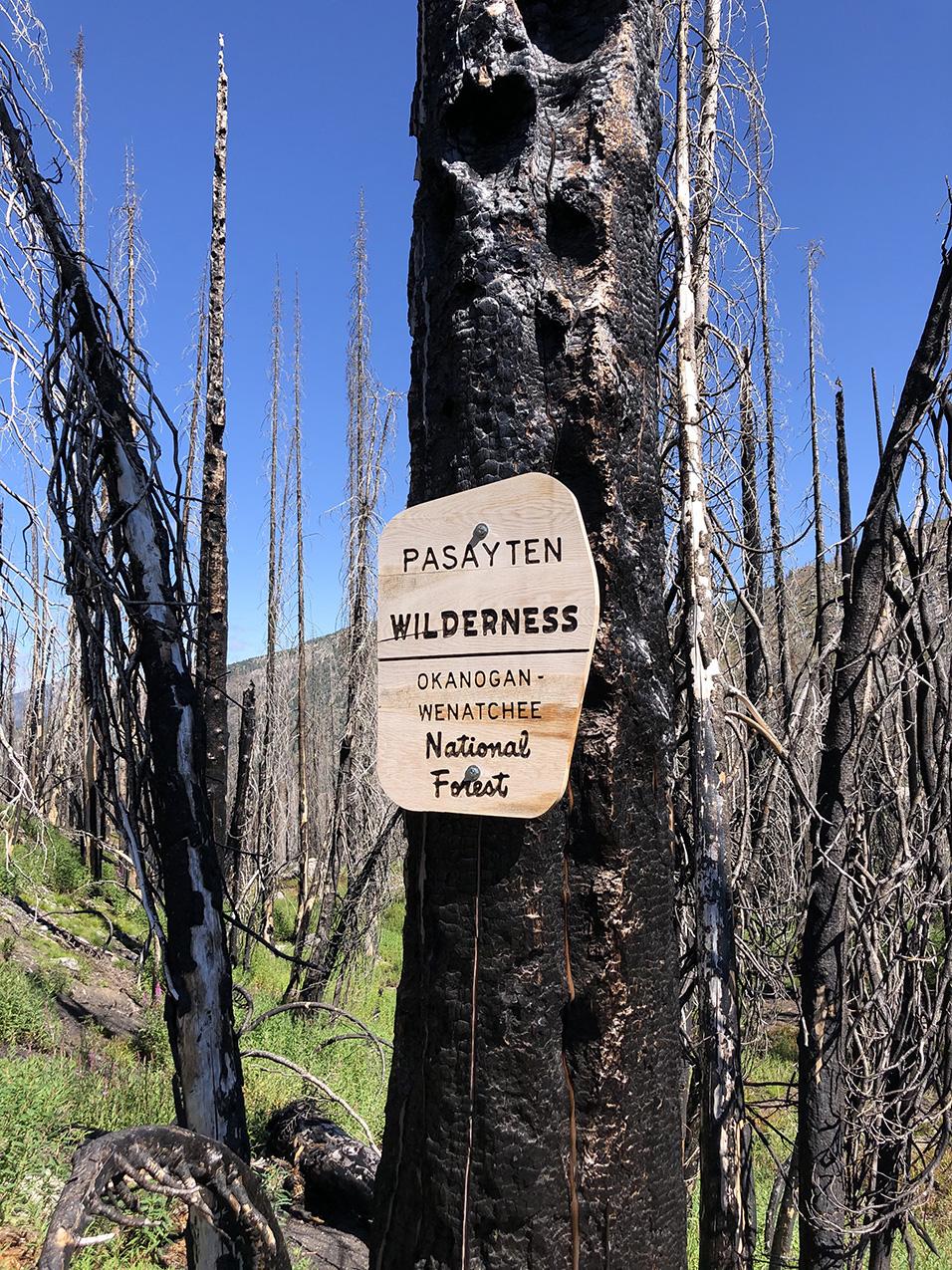 15.
15.
Oasis: a refuge of green in an arid region. The Pasayten Wilderness: more than 500,000 acres of firs and cedars, pines and larches, stretching like an emerald sea from the rugged crest of the Cascades to the sun-drenched plateaus of the east. If you were a migrating bird traversing this oasis of trees, you’d observe nearly 150 peaks higher than 7,500 feet poking up through the clouds.
16.
Predictive models show that wolverines in the Lower 48—three hundred animals, give or take—could lose one-third of their spring snow habitat by 2060 and two-thirds by the end of this century. Some populations will likely become smaller and more isolated, while others will disappear altogether…again. The prognosis for Washington provides a glimmer of hope. Large expanses of snow might hold on longer here than elsewhere, rendering the North Cascades one of the last refuges for wolverines in the 2100s.[5]
17.
Quote from a fellow field biologist who had recently endured his third Level 3 evacuation notice (GO NOW!): “If we have another summer from hell this year, I may throw myself from a high cliff and let the wolverines consume my remains.”
18.
Rewilding happens, sometimes without or despite us.
Wolverines, like wolves, found their own way back to the North Cascades from Canada in the 1990s and 2000s—sightings reported here and there, then an upward tick, finally real numbers and reproduction. First came the wolf pups in 2008, next, wolverine kits in 2012. But the rewilding story is a work-in-progress and humans are central characters, even minus our traps and guns.
Rewilding embraces the essential nature of wolverines, whose epic wanderings mean they now have to navigate roads, logging, ranches, housing tracts, skiers, hikers, snowmobiles, and climate change. What is the essential nature of a wolverine? All we really know is that it includes vast movements and snow.
Wildfires, too, play a key role in rewilding. But as with the predators we persecute, our fears and short-term thinking about fire ignite the urge for control and suppression. What is the essential nature of a wild forest? Trees need to burn, without or despite us.
19.
Smokejumper. I’m not sure I can think of a more frightening occupation. Assemble your gear, including a hundred pounds of firefighting equipment and a parachute that presumably functions. Drop out of an airplane and into a blazing forest—or straight into a burning tree. “Don’t you get punctured by branches?” I asked a smokejumper I encountered in North Cascades National Park. His bulging arms looked like he pumped logs for training. “That’s where the Kevlar suit comes in.”
The next morning, the smokejumper led my field partner and me toward a raging fire. When I’d told him we were eager to retrieve a wildlife camera before it became engulfed in flames, he had offered to escort us six miles up the mountain. Now he held a Pulaski in his hand and trained eyes on the fire, which was currently focused on the other side of the creek. During the hike, our guide disclosed that he’d spent his troubled youth in and out of jail, until one time he stood before a judge and pleaded that the system made it impossible for him to change his ways and get a job. The judge dropped probation charges and released him on the spot; the smokejumper changed his ways and got a job. I entrusted the smokejumper with my life. I didn’t trust the smoke that seemed to grow closer with each step.
“I think we’re too late,” my partner said as we rounded a sharp bend. To my left, flames licked the bases of smoldering trees, lit up like candles at the crown. To my right was the creek, now a failed firebreak. The mounting breeze swirled smoke and heat and worry in my face. “This is when the fire picks up every afternoon,” the smokejumper told me just before we turned around.
It wasn’t until the following spring that a colleague handed me the melted lump of metal that was once our camera. We’ll never know if a wolverine passed by our station, trying to outpace the perils of climate change.
20.
Twisp River. Tinpan. Tripod Complex. Thirty Mile. Too many “T” fires to choose from in the 2000s alone.
21.
Undulating like a wave across the windswept slope, the wolverine vanished before my companion standing next to me had a chance to bear witness. I later learned that this might have been Special K, a juvenile male fitted with a telemetry collar. During his initial capture by agency biologists, he didn’t respond to the tranquilizer, ketamine—a drug dubbed Special K on the streets. Special K patrolled an area almost as big as Yosemite, including the place where I watched that mystical wolverine lope from one side of an avalanche chute to the other in a matter of seconds. Genetic tests suggest that Special K was likely the son of Rocky, who’d been known to cover even more ground than Special K in his search for food and females (see “X” below).
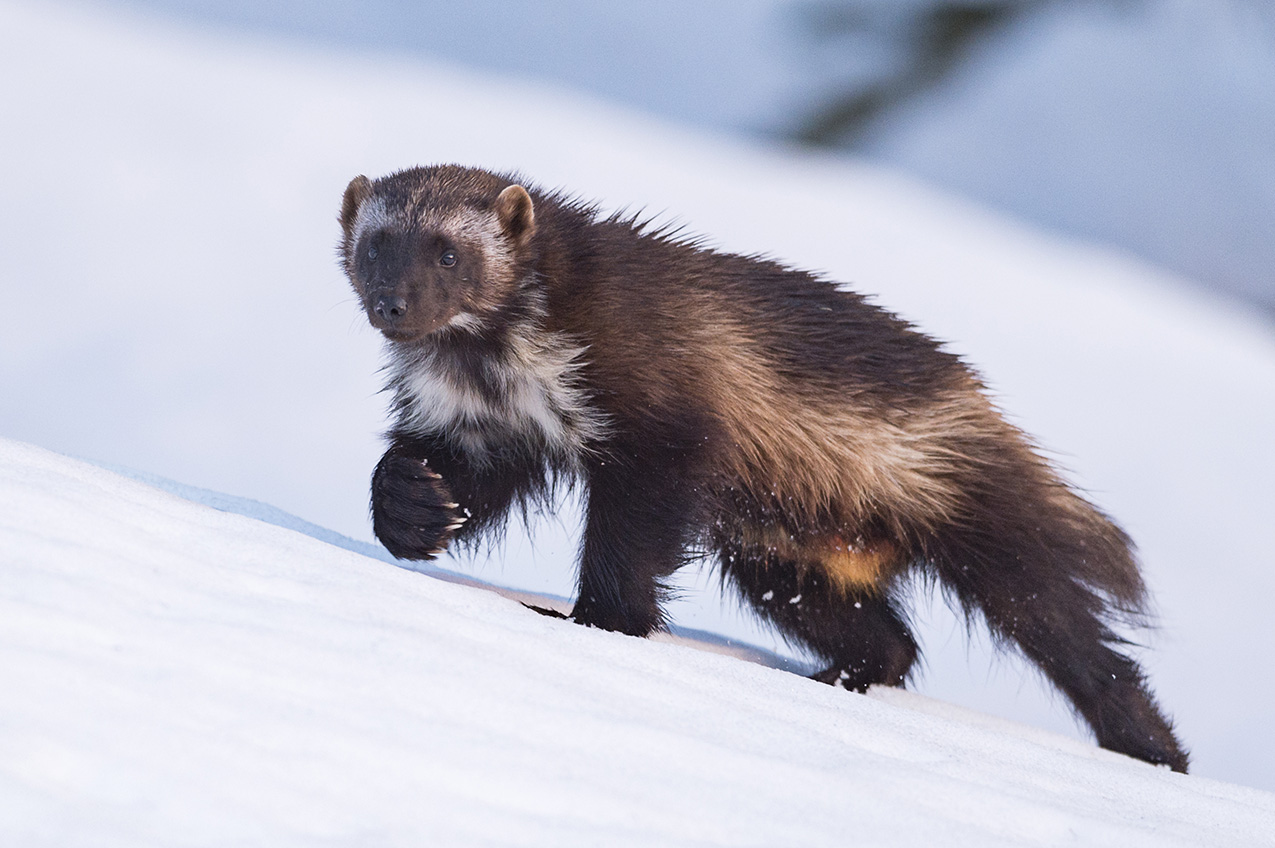
22.
Vicious is not a term to describe wolverines. Formidable, yes—how else could you excavate a frozen goat from avalanche debris, or fend off a grizzly who shares your taste for marmots? Vicious is a word I reserve for certain pundits and politicians.
I once butted heads with the editor of a hiking magazine. With the sweep of a pen, he mutated my message that wolverines are too often characterized as malevolent because we tend to project egregious human traits on wild predators. See for yourself.
My version: What about their reputation for being vicious? True, a wolverine can take down a deer or a tired elk in the snow, but even your gentle-spirited grandmother would look pretty mean if she had to shop for meat with her teeth.
Editor’s version: About their reputation for being vicious: It’s true. A wolverine can take down animals as large as a deer or a tired elk.
I told the editor words matter to wolverines.
23.
Wildland fires have burned more than half of the Pasayten Wilderness since 2000.
24.
Xena’s reproductive den was found in North Cascades National Park in 2012. Cameras deployed near her den confirmed one kit. Maybe it was Dasher, likely the son of Xena and Rocky. Dasher and Rocky were once photographed together—just another father and son roaming the wilderness.
A second den was located that same year, this one belonging to Mallory. Xena and Mallory were the first two wolverines ever documented by scientists to have given birth in Washington. Another mother, called Joni, has followed suit down near Mt. Rainier, more than a hundred miles south of the North Cascades. Wolverines are traveling great distances, even across highways, to rewild their old stomping grounds.
25.
Young, vibrant vegetation set against a backdrop of burn. This was my impression when I returned to Ashnola a year after my first visit and three since the Diamond Creek Fire. Everything looked different. Crocodiles and corpses had been supplanted by fireweed and sapsuckers; fleabane and other wildflowers painted our path. Eagles soared overhead, deer scat squished underfoot. Clear-running streamlets—were they here twelve months ago?—seemed to magically appear whenever my dog needed a drink.

26.
Zero degrees Celsius, the freezing point of water. Eight hundred degrees Celsius, the temperature of a burning forest.
Robert Frost wrote:
Some say the world will end in fire,
Some say in ice.
For wolverines, ice is birth, only the beginning. Will their world end in fire?
[1] Aubry, Keith B.; McKelvey Kevin S.; Copeland Jeffrey P. 2007. “Distribution and Broadscale Habitat Relations of the Wolverine in the Contiguous United States.” Journal of Wildlife Management. 71(7):2147-2158. 10.2193/2006-548
[2] Lewis, J. C. 2016. Periodic Status Review for the Lynx in Washington. Washington Department of Fish and Wildlife, Olympia, Washington. 17 + iii pp.
[3] Riedel, Jon and Larrabee, Michael. 2016. “Impact of Recent Glacial Recession on Summer Streamflow in the
Skagit River.” Northwest Science. 90(1):5-22. 10.3955/046.090.0103
[4] Dick, Kristina Amanda. 2013. “Glacier Change in the North Cascades, Washington: 1900-2009.” Thesis. Portland
State University, Portland, Oregon. 10.15760/etd.1062
[5] McKelvey, Kevin & Copeland, Jeffrey & Schwartz, Michael & Littell, J. & Aubry, K.B. & Squires, J.R. & Parks, Sean & Elsner, Marketa & Mauger, Guillaume. 2011. “Climate Change Predicted to Shift Wolverine Distributions, Connectivity, and Dispersal Corridors.” Ecological Applications. 21(8):2882-2897. 10.2307/41417100.


